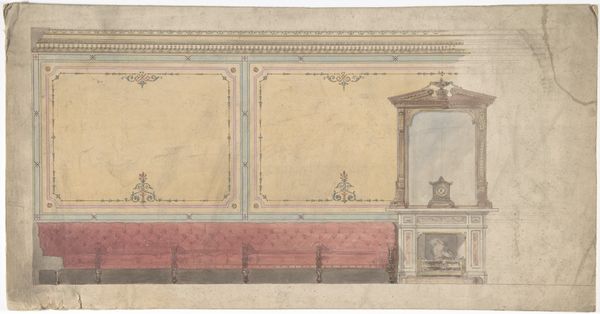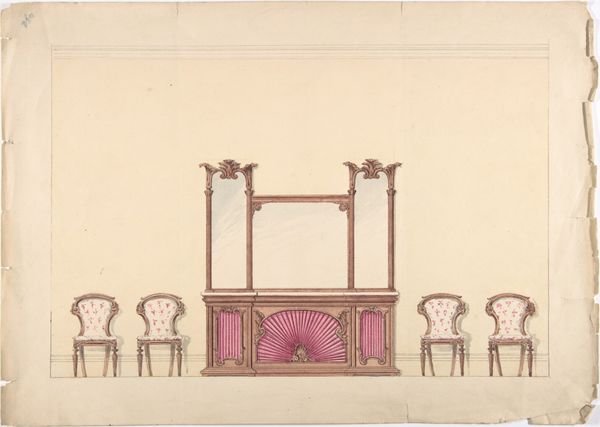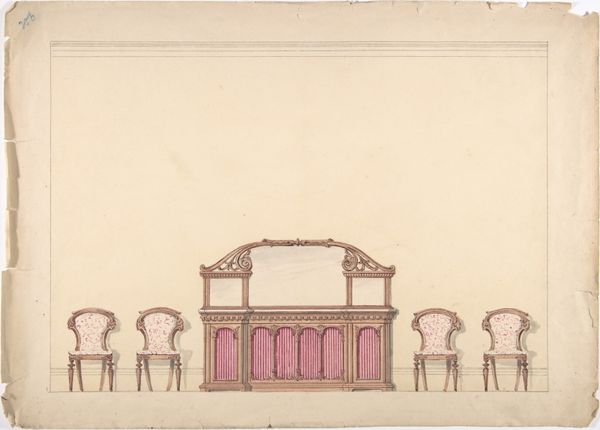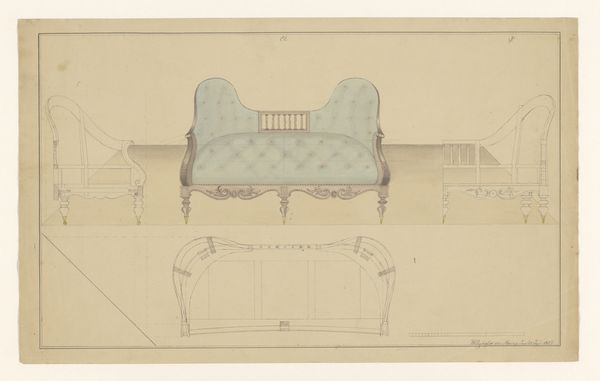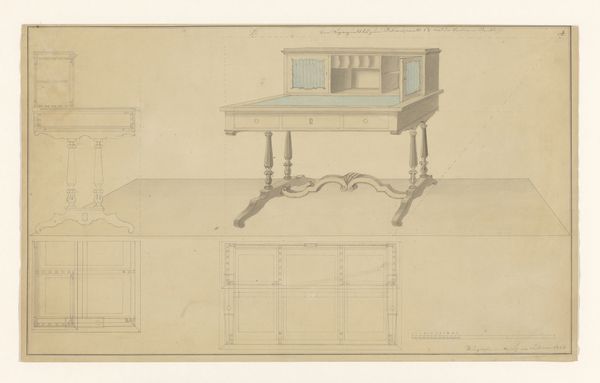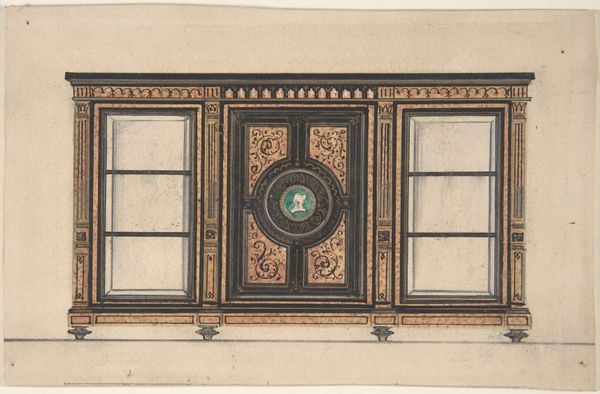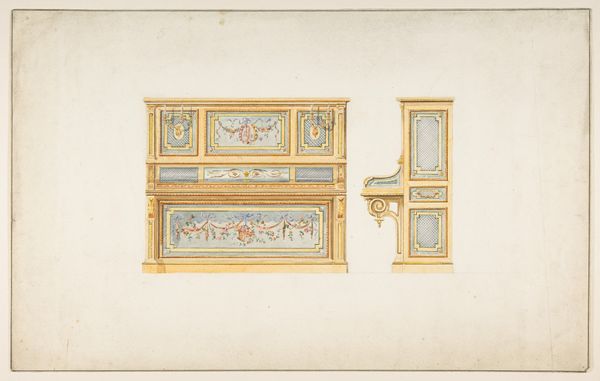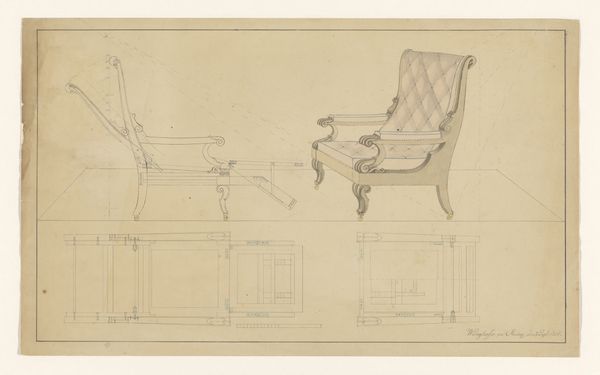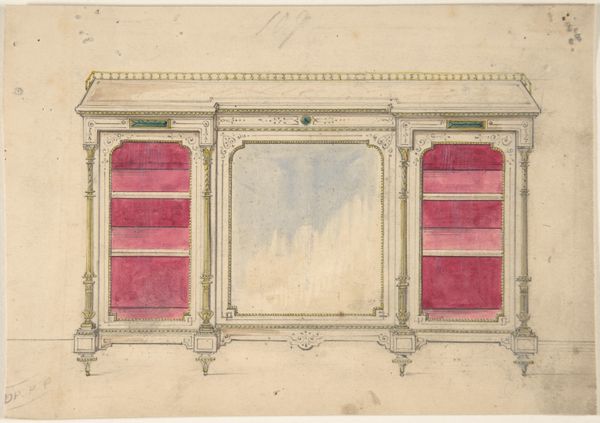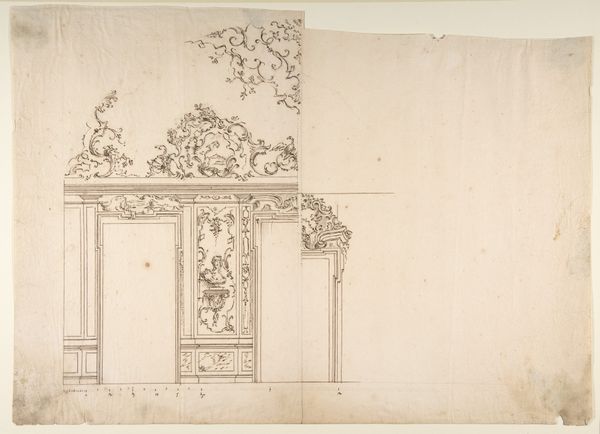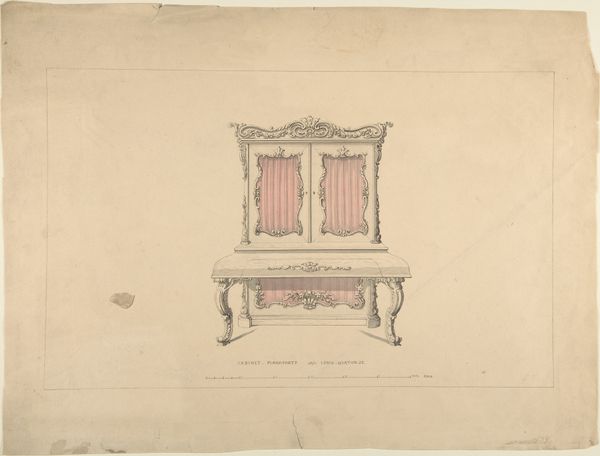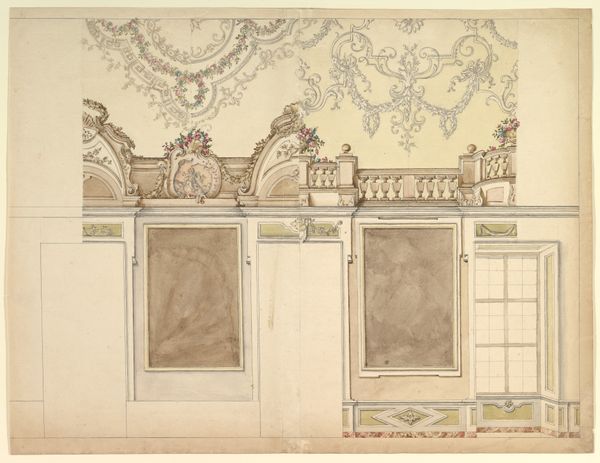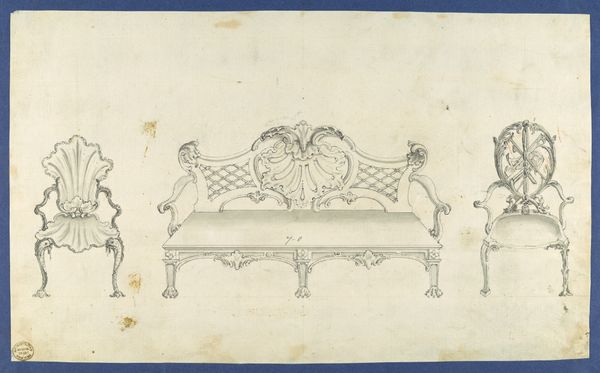
Design for a Mirrored, Marble-topped Cabinet and Two Sofas 1800 - 1850
0:00
0:00
drawing, print, watercolor
#
drawing
#
neoclacissism
#
aged paper
#
toned paper
#
water colours
#
muted colour palette
# print
#
landscape
#
watercolor
#
decorative-art
Dimensions: sheet: 12 3/16 x 17 1/8 in. (31 x 43.5 cm)
Copyright: Public Domain
Editor: We’re looking at "Design for a Mirrored, Marble-topped Cabinet and Two Sofas," made sometime between 1800 and 1850. It’s watercolor on toned paper, and it's currently held at the Metropolitan Museum of Art. The furniture appears elegant, but also surprisingly austere. What strikes you about this piece? Curator: What immediately captures my attention is the staged domesticity within the drawing. The objects speak volumes about class and aspirations in early 19th century society. How does the rendering of furniture – often a marker of wealth – reflect or subvert the public's idea of luxury and comfort during this time? Editor: So, the act of designing and illustrating these pieces carries cultural significance beyond just aesthetics? Curator: Precisely. Consider the rise of the middle class and their increasing access to goods previously exclusive to the aristocracy. Designs like these played a vital role. They weren't just about crafting furniture, but about disseminating aspirations and constructing social identities. Are these designs practical or aspirational, or both? Editor: I see what you mean. The idealized setting, coupled with the neo-classical design, positions these pieces, and, by extension, their owners, within a particular social and artistic framework. Curator: Indeed. And consider how the distribution of design through prints influenced both the market and artistic expression, standardizing taste. Editor: It’s fascinating how a seemingly simple furniture design can reveal such a complex interplay of social forces and artistic intentions! I hadn't considered it in that light before. Curator: It's a potent reminder that art and design are never created in a vacuum. Considering their socio-political role makes appreciating the historical artwork even more rewarding.
Comments
No comments
Be the first to comment and join the conversation on the ultimate creative platform.
